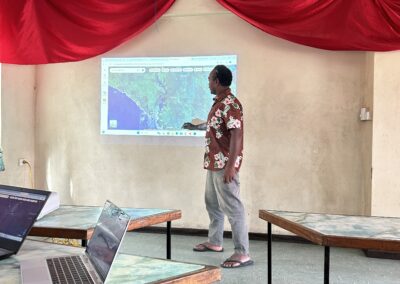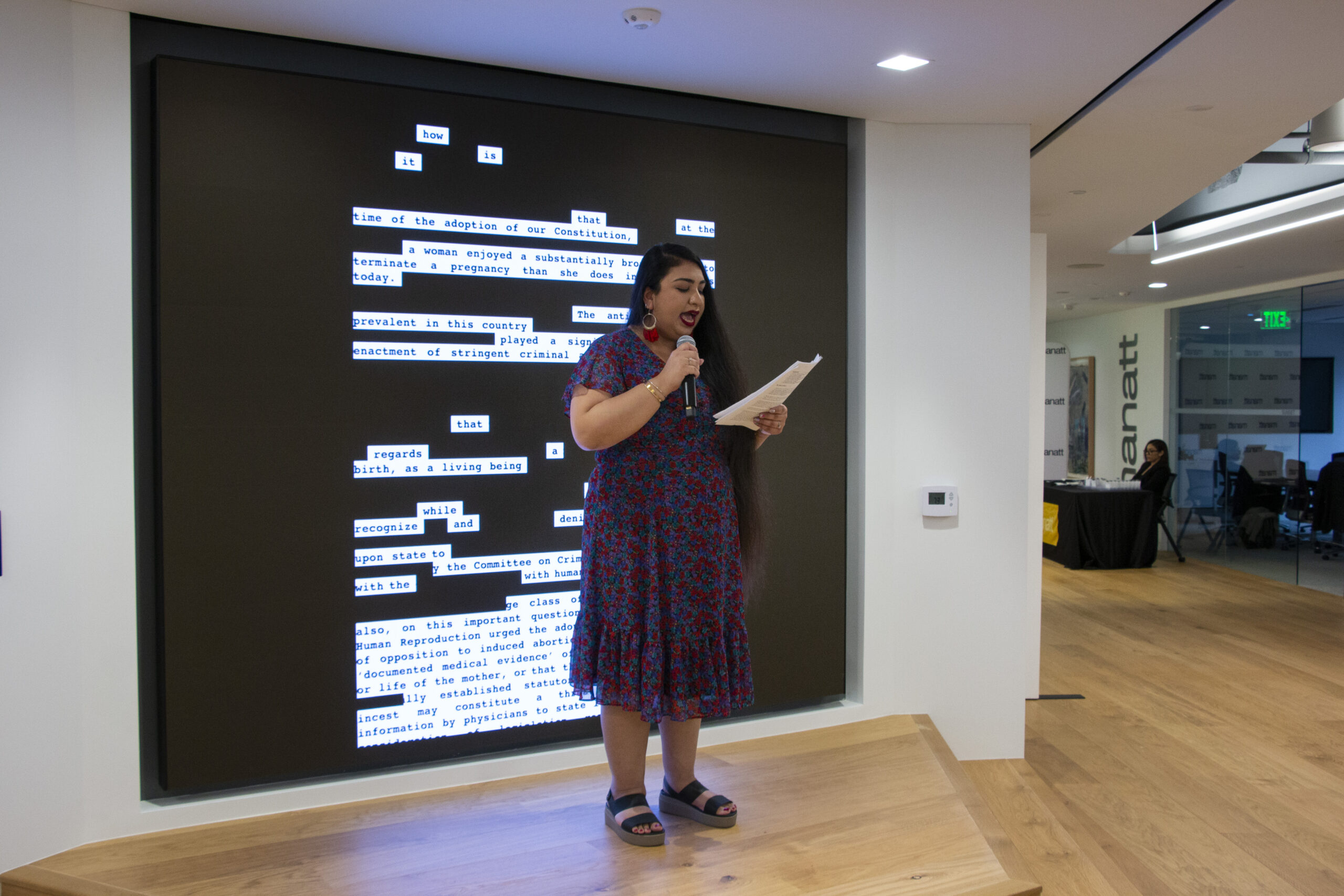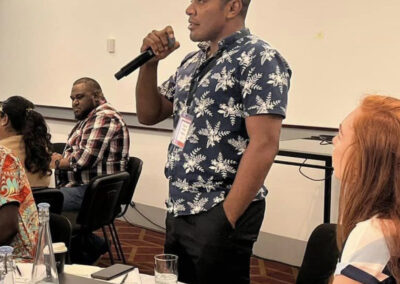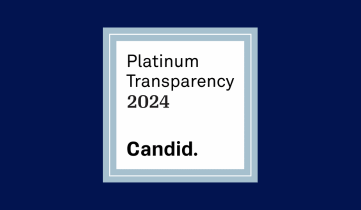
ICAAD’s Relationship-Centered Approach to Education
Erin Thomas, ICAAD Director and Change Facilitator, is the lead facilitator and curriculum designer for the Advocacy Academy. This piece is an introduction to the intentions, commitments and methodologies that sit behind our Human Rights Education programs.
Rethinking Co-design
Many co-design processes are fraught because they fall short of true collaboration. Too often, facilitators dominate the design process and outcomes, failing to share power and relegating participatory methods to mere tokenism. Under these circumstances, inevitably, the outcomes will not reflect the needs and insights of the community involved. When a process doesn’t fully engage its collaborators, it will produce lackluster outcomes and disrupt relationships. However, it doesn’t have to be that way.
As facilitators, our role is to uncover the inherent knowledge, insights, and experience within the group, and allow that to lead the design – not to impose our agenda or potential solutions. We must support all involved in building trust in themselves, their co-designers, and this group’s ability to move through the design process in a way that brings value not only to the problem at hand but also to themselves and each other.
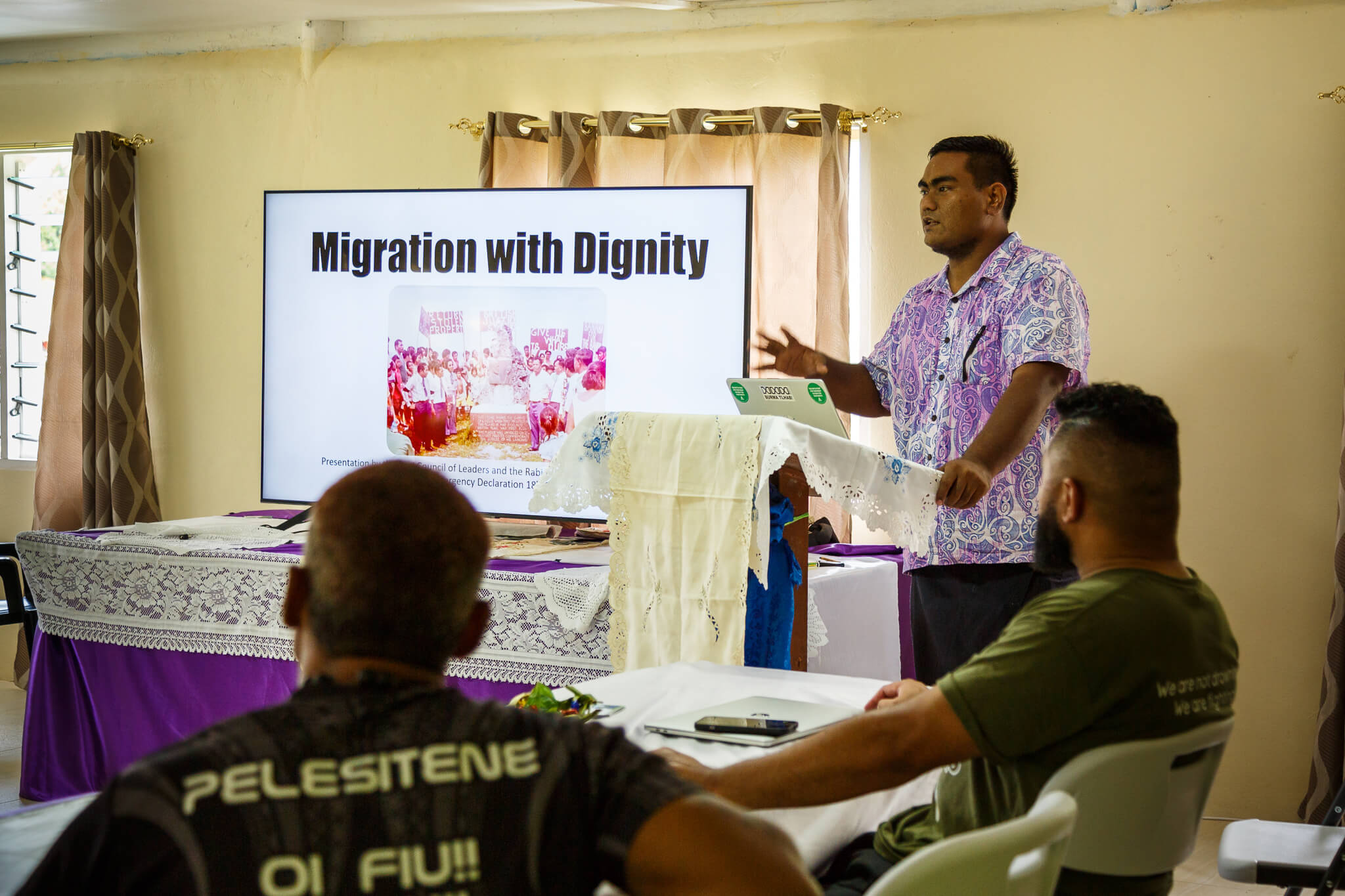
The Goal of Facilitation
In the art of facilitation, our goals – both for the process and the outcomes – are best achieved by prioritizing relationships. This looks like sharing power, building each other’s capacity, and using methods that emphasize participation.
At ICAAD, we emphasize relationships and process, drawing from design thinking and our deep commitment to design justice. We have learned from many amazing teachers, as well as our frontline partners, gradually refining our approach through constant iteration over more than a decade.
What is Design Justice?
Design justice is, at its core, a set of principles that seek to distribute risk, benefit, and power evenly among a group of people who are creating something together.
In almost every space that we occupy, systems founded on ideas of superiority and oppression (white supremacy, cis-heteropatriarchy, capitalism and colonialism/imperialism being among the most prevalent and insidious) govern our subconscious interactions. Any design process either reproduces or challenges these systems. When we practice design justice, we work to shine a light on and interrupt these harmful patterns.
Especially when we wield professional skills, facilitators are also at risk of unconsciously perpetuating these systems. While our expertise can be valuable, it cannot overshadow the lived experiences and ideas of those directly impacted by the design. Theirs are the ideas most directly connected to the context we are seeking to shift, and they hold essential insights into the problems we seek to address. Their voices, however, are consistently marginalized by systemic inequities, including inequitable access to education, capital and other resources.

Our mission is to bring these voices into meaningful contact with those who hold power and to shift that power towards the frontlines of injustice.
Justice-Centered Training and Facilitiation
Each design process has intended outputs, aiming to benefit a particular group of people. Further to that, it’s critical that both the design process itself also benefits the collaborators themselves.
As we guide collaborators through a design process, we ask ourselves questions like “Is this work adding value, or fatigue?” and “Is this process increasing people’s sense of their own power and dignity?”
As an example, a process outcome may look like achieving self-belief among the group as they encounter their own ability to organize, contribute to and shape the process and its outcomes. Witnessing each collaborator recognize the value of their own knowledge and experience is a sign that we are on track.
We use a structured yet iterative framework to guide us through any co-design or training process. We have found this structure to be invaluable in generating collective and equitable ownership over these processes. Leading up to the design, there are three critical phases:
Step One: Build a Foundation
In the excellent guidance from “The Relationship is the Project,” authors share, “A relationship is the state of being connected. Without connection to the people we are working with, we’re not able to design or create a truly community-engaged process or experience.”
While this may seem obvious, it often gets lost in projects and interventions when other priorities take over. We often don’t measure the quality of relationships in our measuring and evaluation or impact reports, and funders often take this critical component to the success of interventions for granted.
Take time.
Building trust requires resisting the urge to rush. Adjust your timelines to ensure that you have time and space to just be together.
Know yourself.
What do you bring to the relationship? The good, the ugly, and everything in between. How can your awareness of who you are, where you come from, and what skills you have to offer enrich these relationships?
Make the effort.
In that time and space dedicated to relationships, make the effort to learn and understand the people you’re working with. What are their interests, motivations, perspectives, and skills?
Practice transparency, honesty, and respect.
When you’re unsure about how to move, aim to communicate clearly and often – guided always by transparency, honesty, and respect.
Step Two: Align
Once a foundation of trust has been established, the next phase is aligning everyone to group purpose and process. Transitioning to this phase requires you to learn what each of your collaborators will need to fully, actively, and safely participate.
Aligning is about supporting everyone to arrive at the same page. What is this particular group’s purpose, process, and scope? What is their existing knowledge, and where are there gaps? Aligning to purpose requires the facilitator to go beyond sharing pre-formulated objectives or codes of conduct. It’s about uncovering collaborators’ needs and expectations, and painting a clear picture of the problem.
For example, when conducting a Train-the-Trainers programme in the Solomon Islands around our TrackGBV findings, we first had to understand the impact of gender-based violence on all parties. What was the impact on survivors, abusers, families, and society at large? Similarly, what were the core values of all collaborators within the training program, and how were these linked to this problem and its impact? During the aligning phase, relationships among all collaborators begin to deepen and patterns of working together start to take shape.
Step Three: Inquiry
The final stage before design can begin is inquiry. Now that we understand the landscape of current knowledge on the problem, we are able to pose questions in response to our knowledge gaps. This might look like skill sharing among collaborators, desk research, pausing the process to go out and collect more information before proceeding, etc. There are many ways to facilitate this stage, but the most important outcome is that collaborators agree they have enough information to begin moving into the design phase.
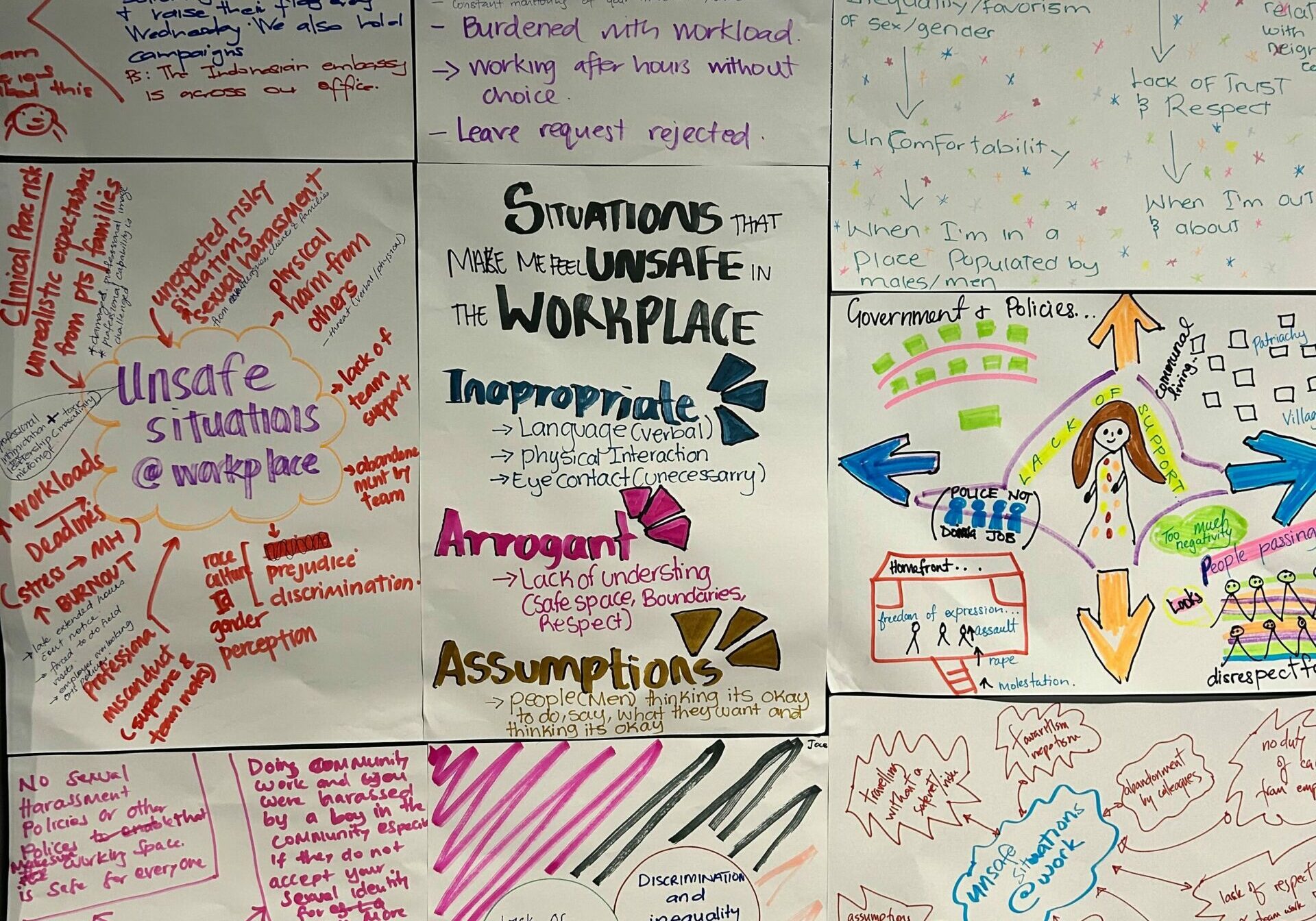

Design
Once the group has moved through these foundational stages, they are well-prepared to design solutions that are both innovative and actually useful. Whether the solution is a set of recommendations, a policy proposal, a campaign strategy, or a group constitution, laying the groundwork maximizes the potential to co-creating effective outcomes.
But design is not the end of the process. The design phase marks the beginning of a continuous cycle of testing, iterating, and learning. Preparing the group for this ongoing process of reflection and adaptation is perhaps even more critical than the initial solutions themselves.
Join one of our virtual information sessions to learn more.
Tax-Exempt Nonprofit
ICAAD is recognized in the United States as tax-exempt under section 501(c)(3) of the Internal Revenue Code. Your charitable donation is tax-deductible in the United States.
United Nations Affiliation
Global Giving Top-Ranked Org
ICAAD has been a top ranked
organization on Global Giving since 2017


